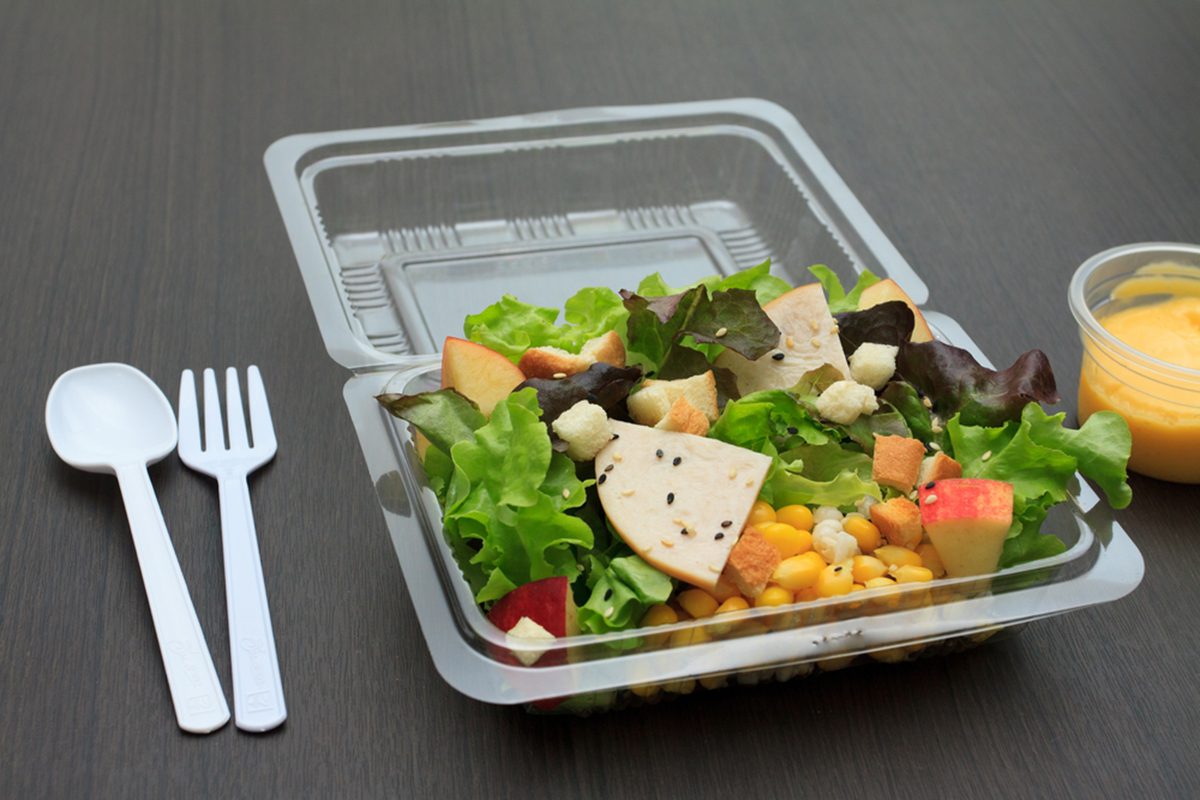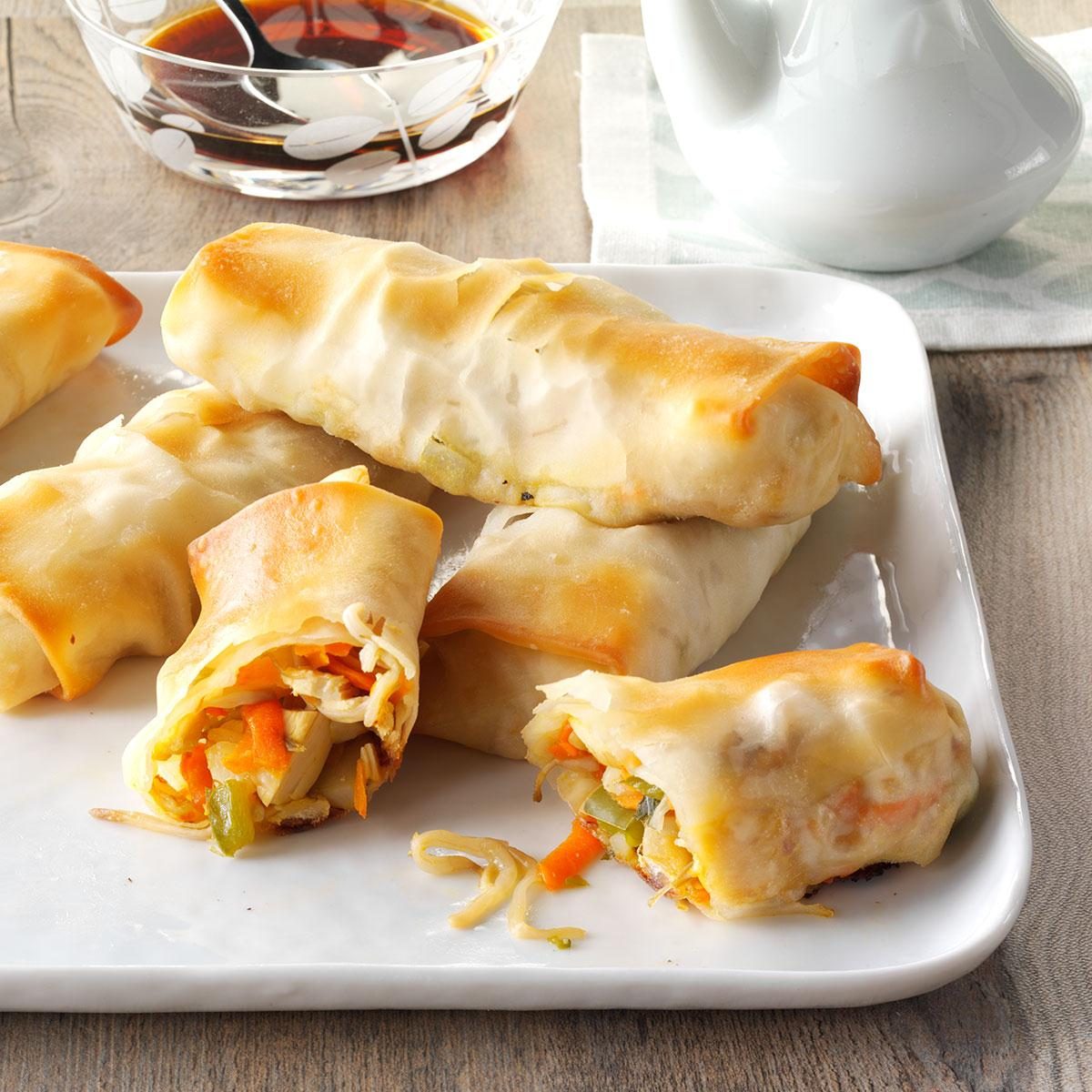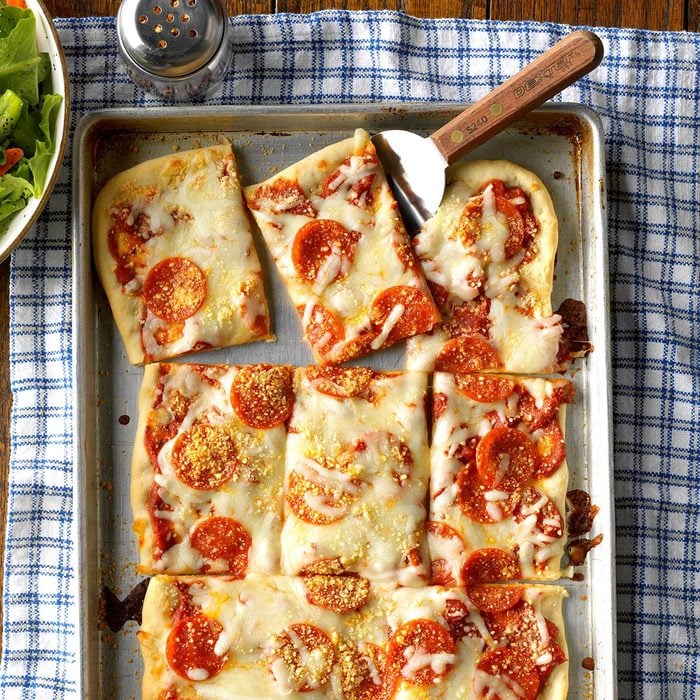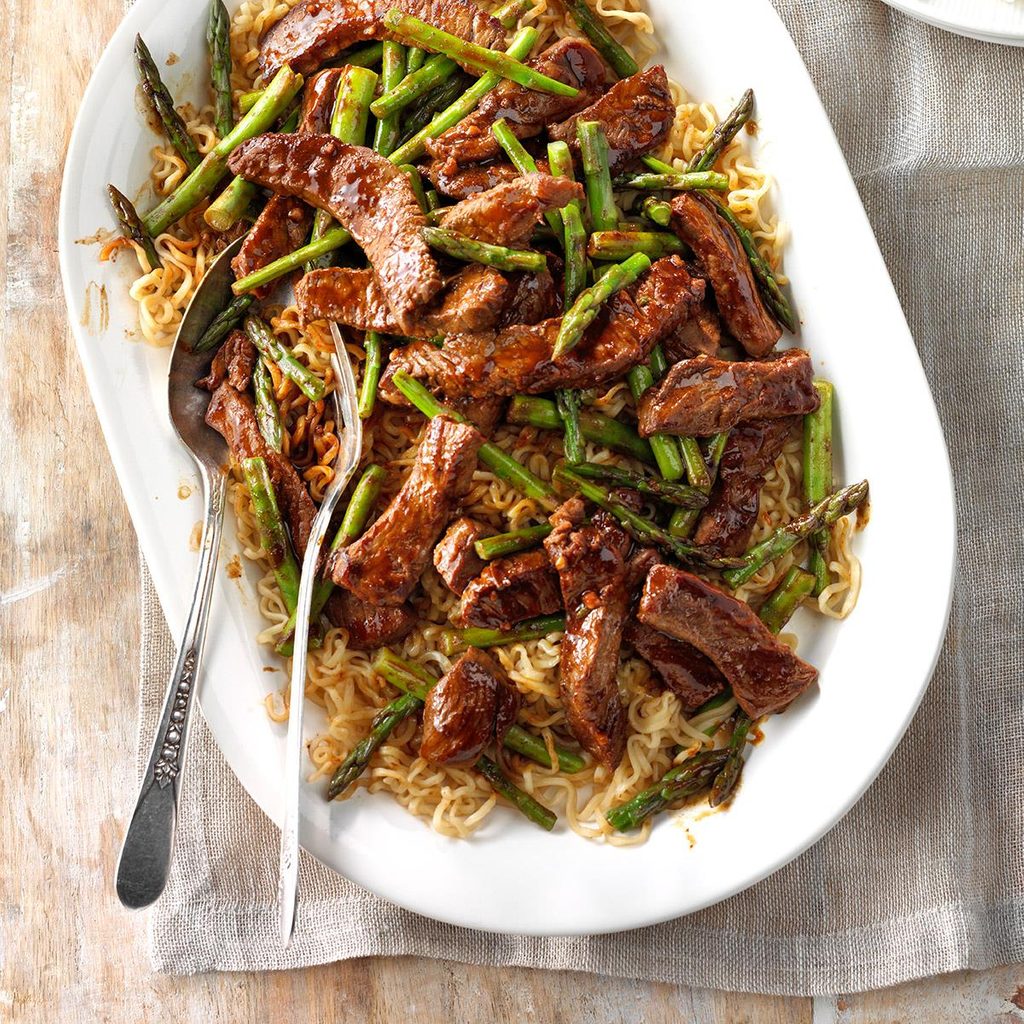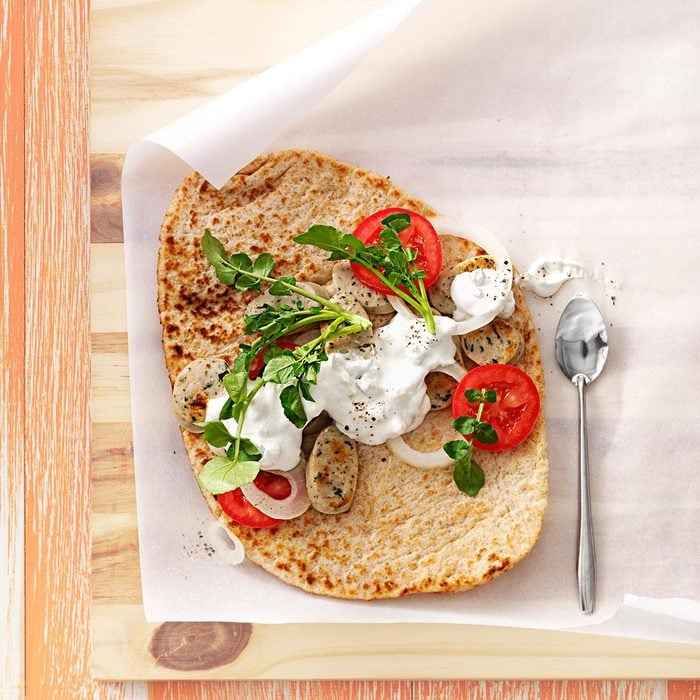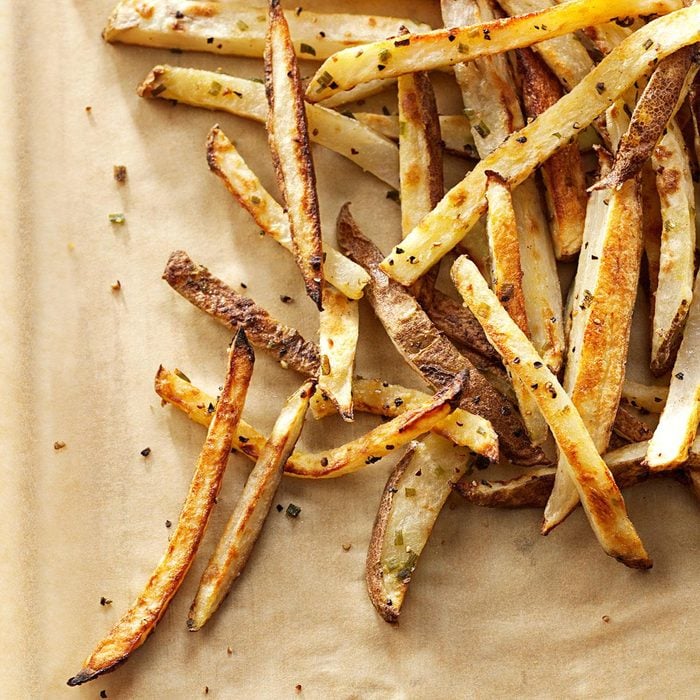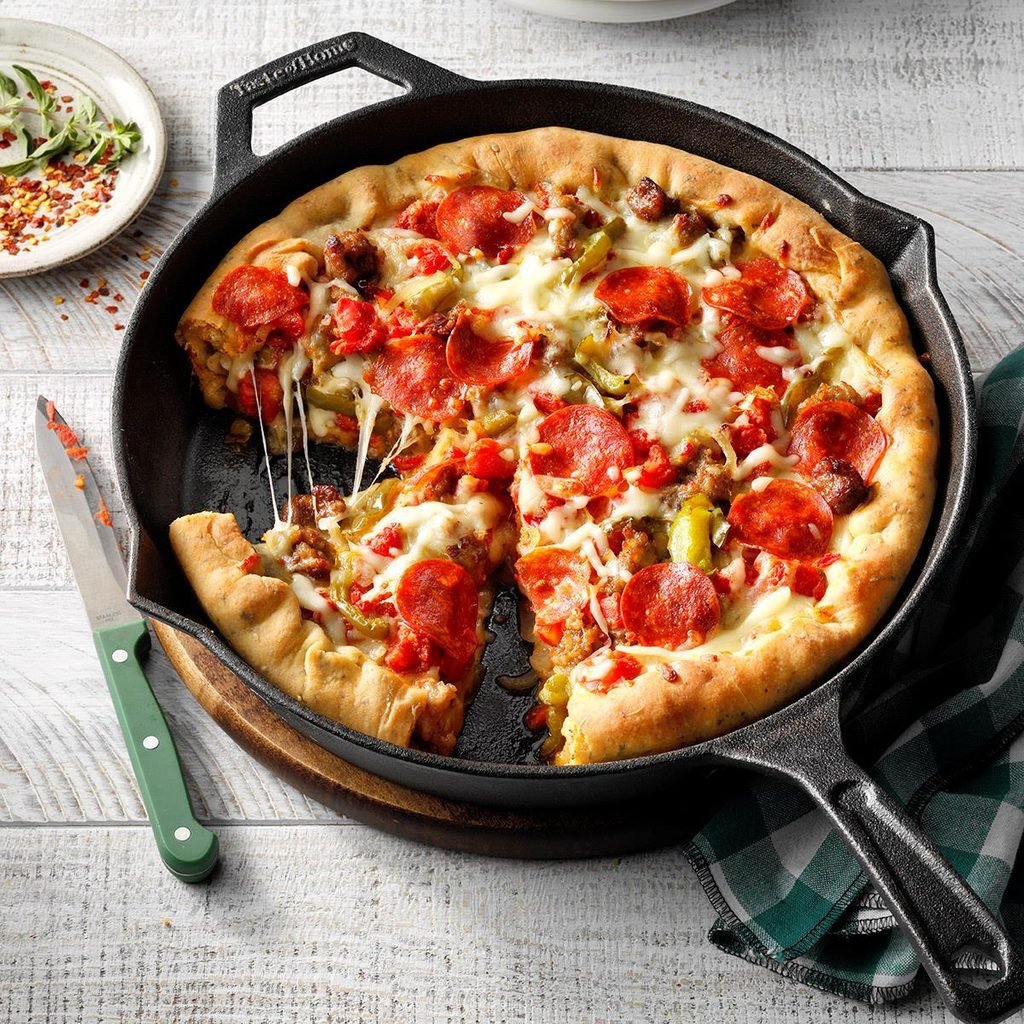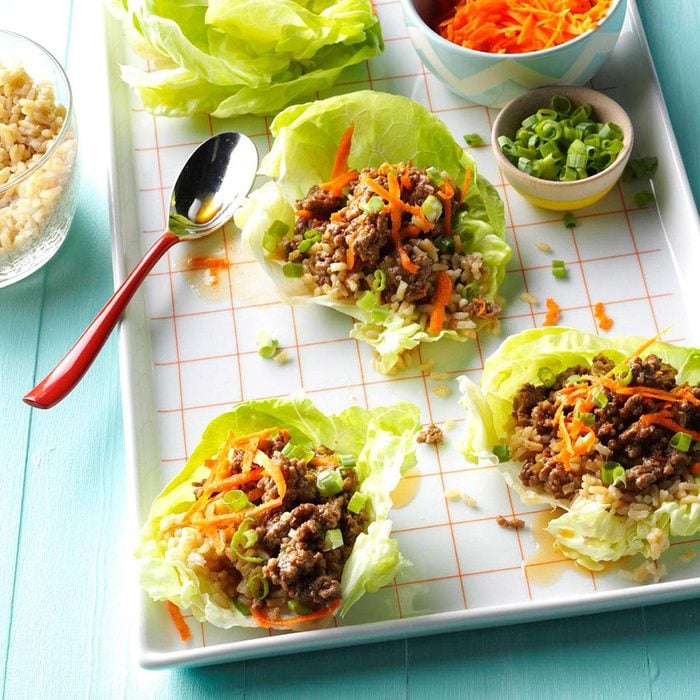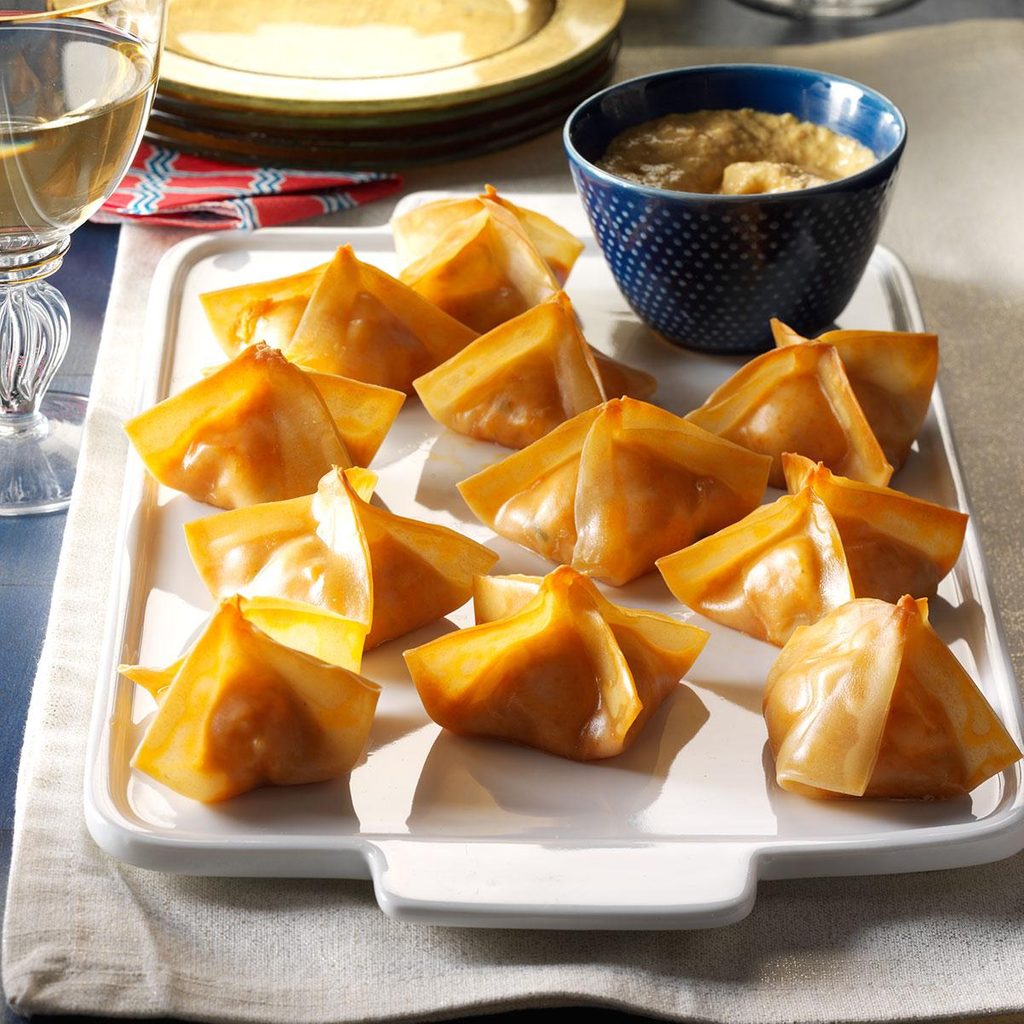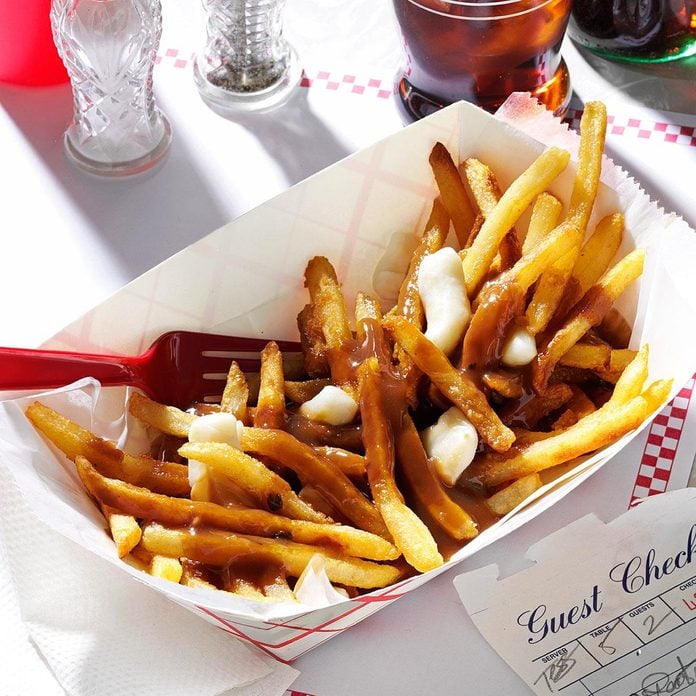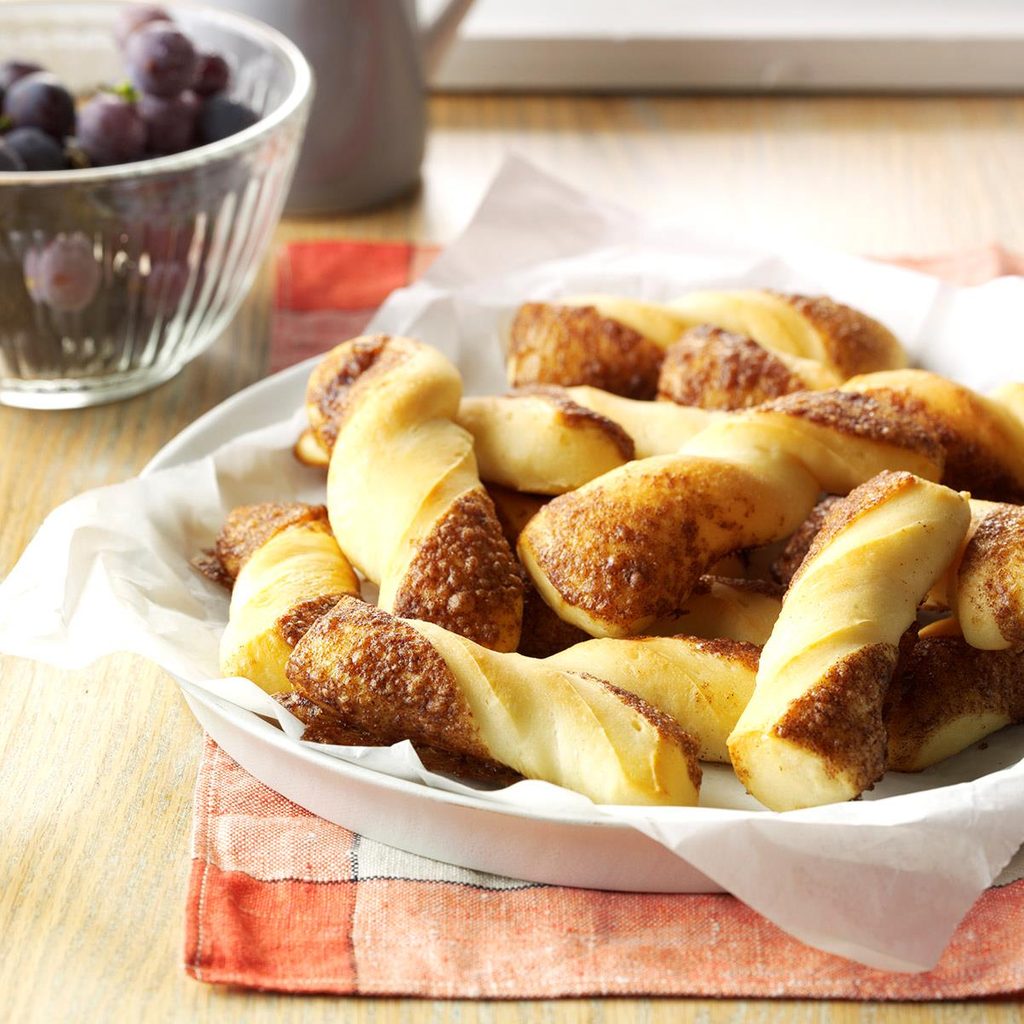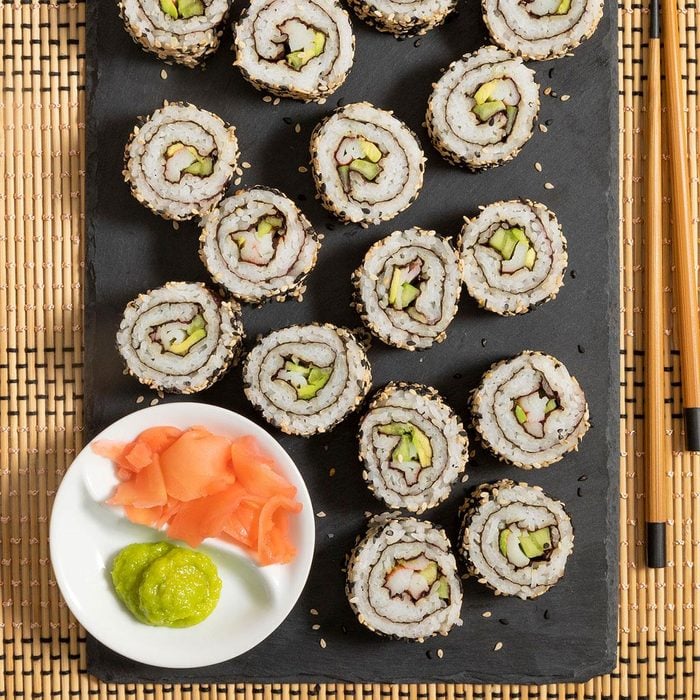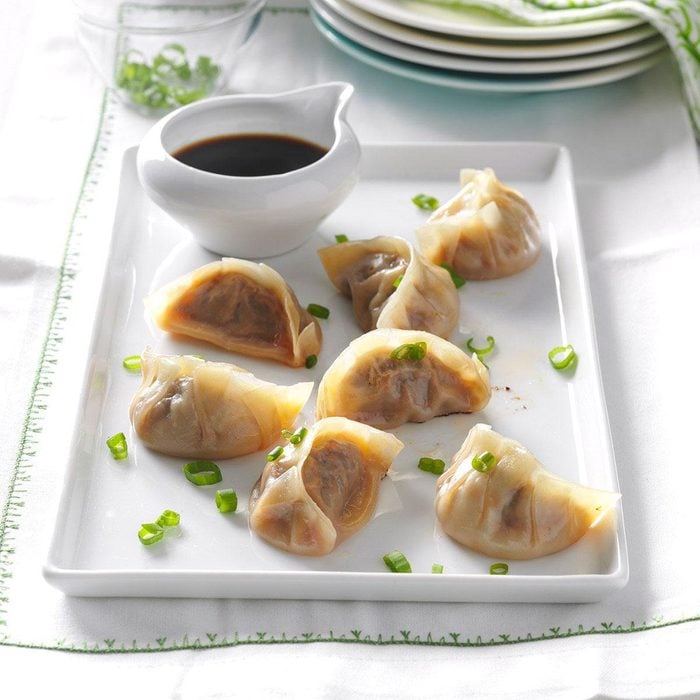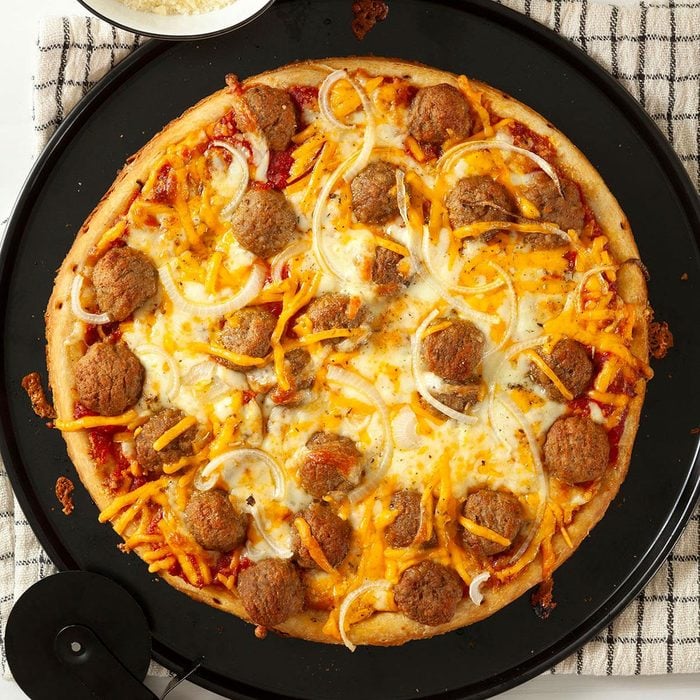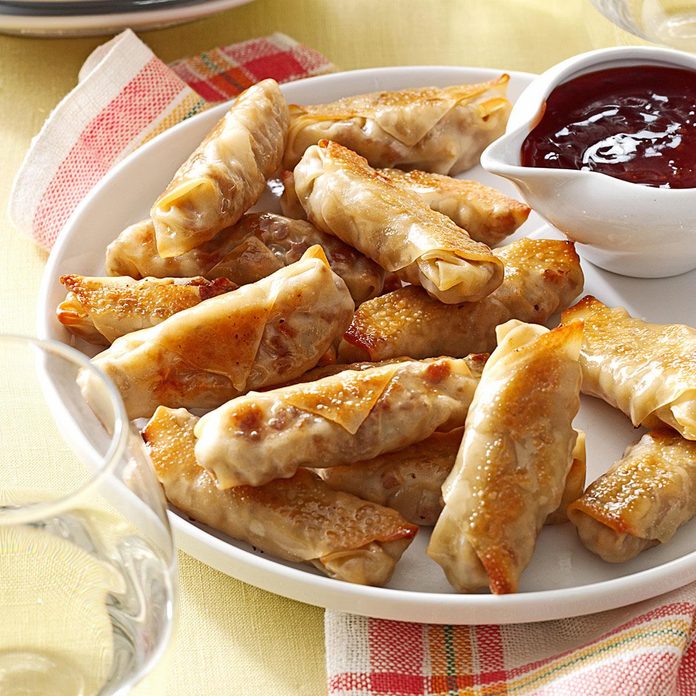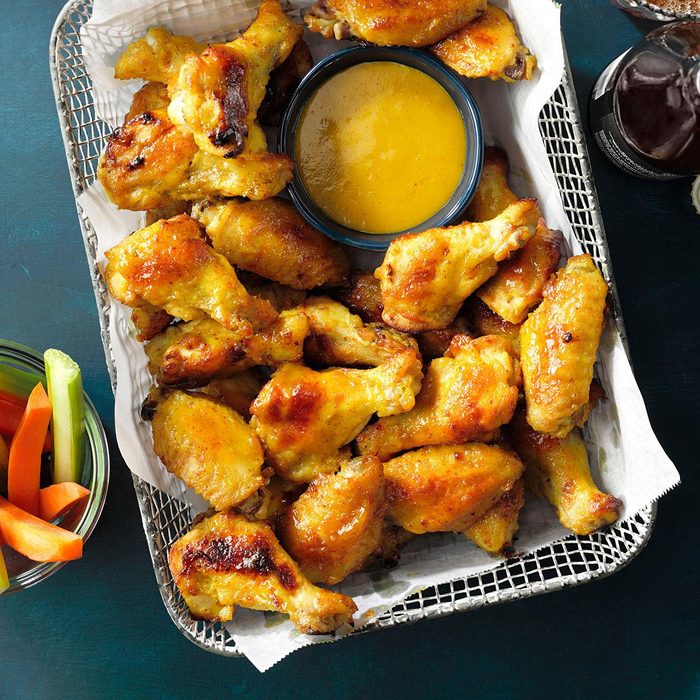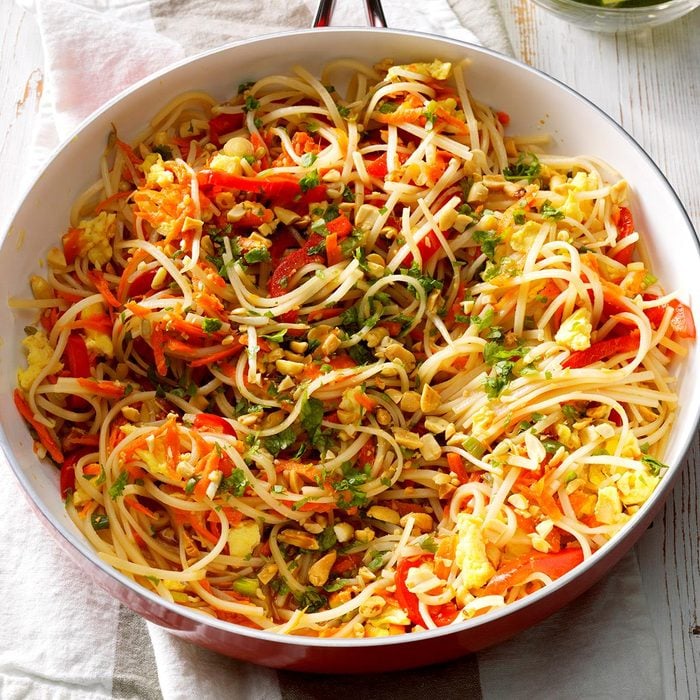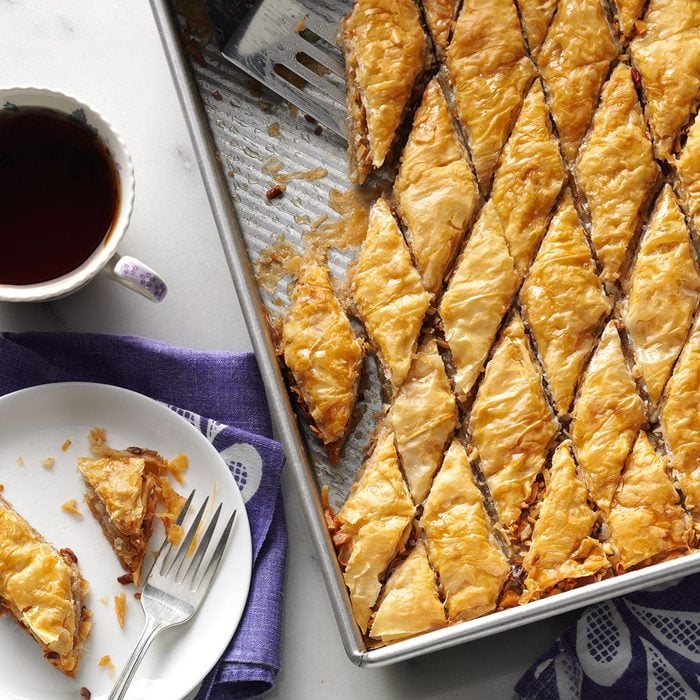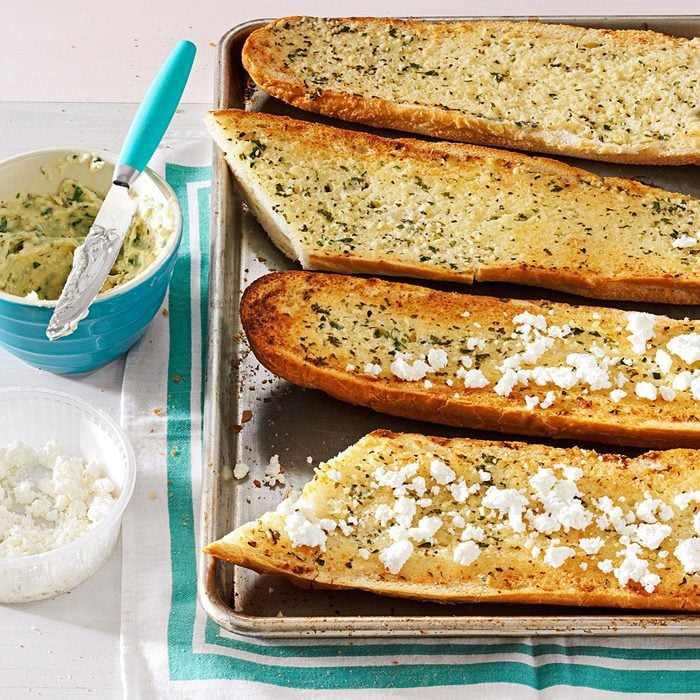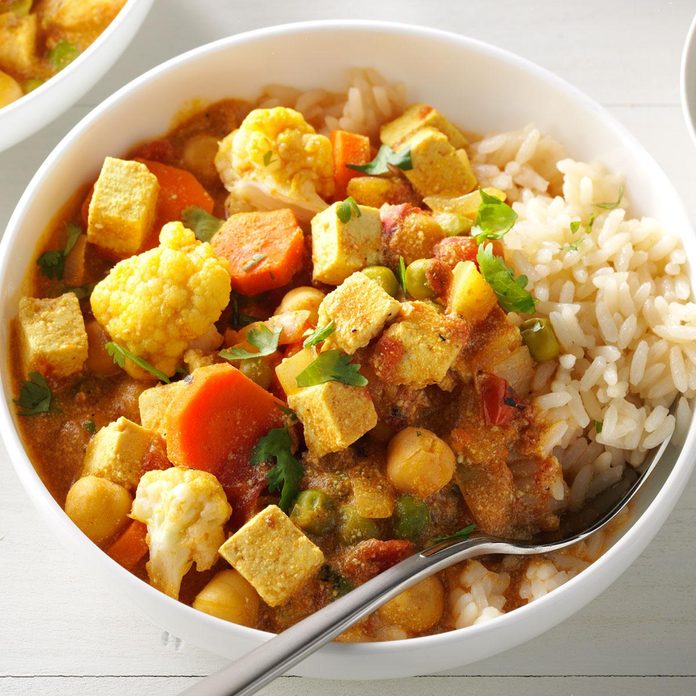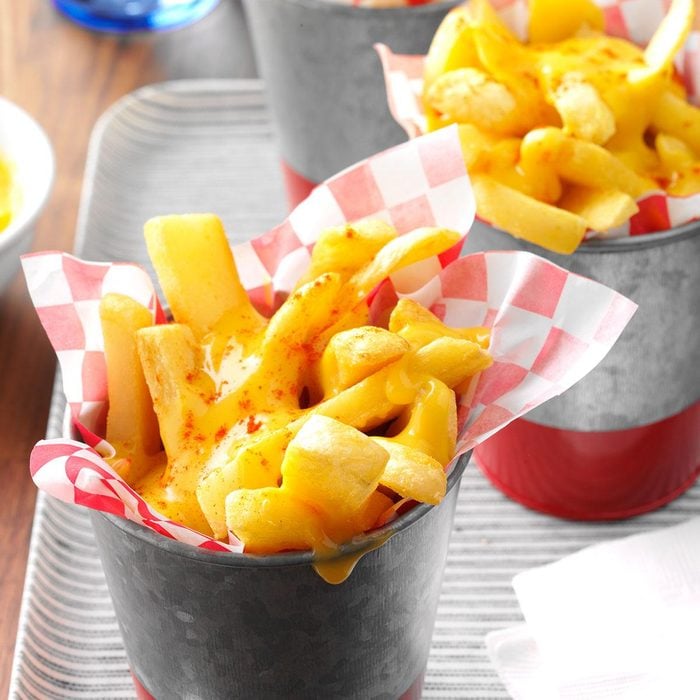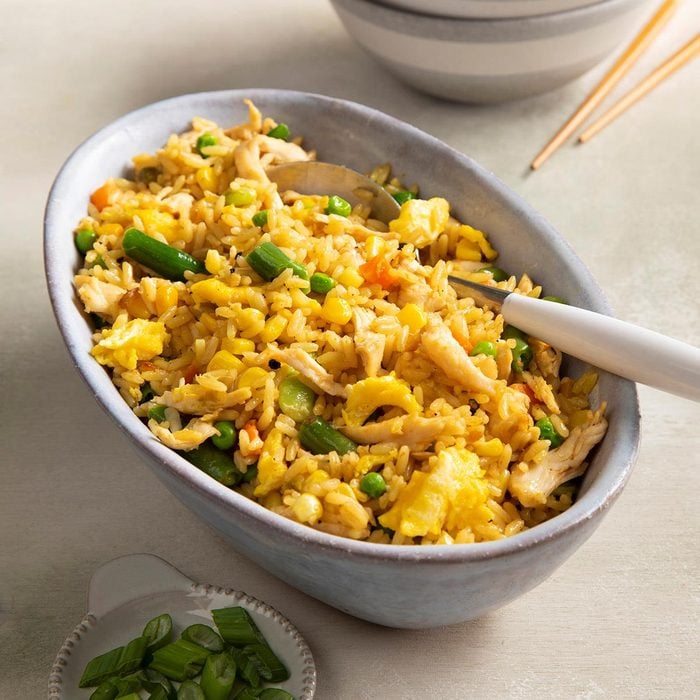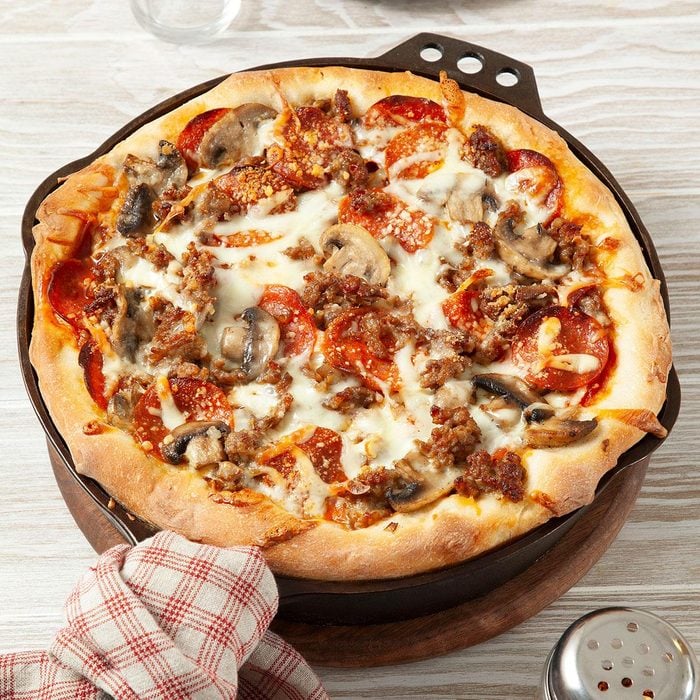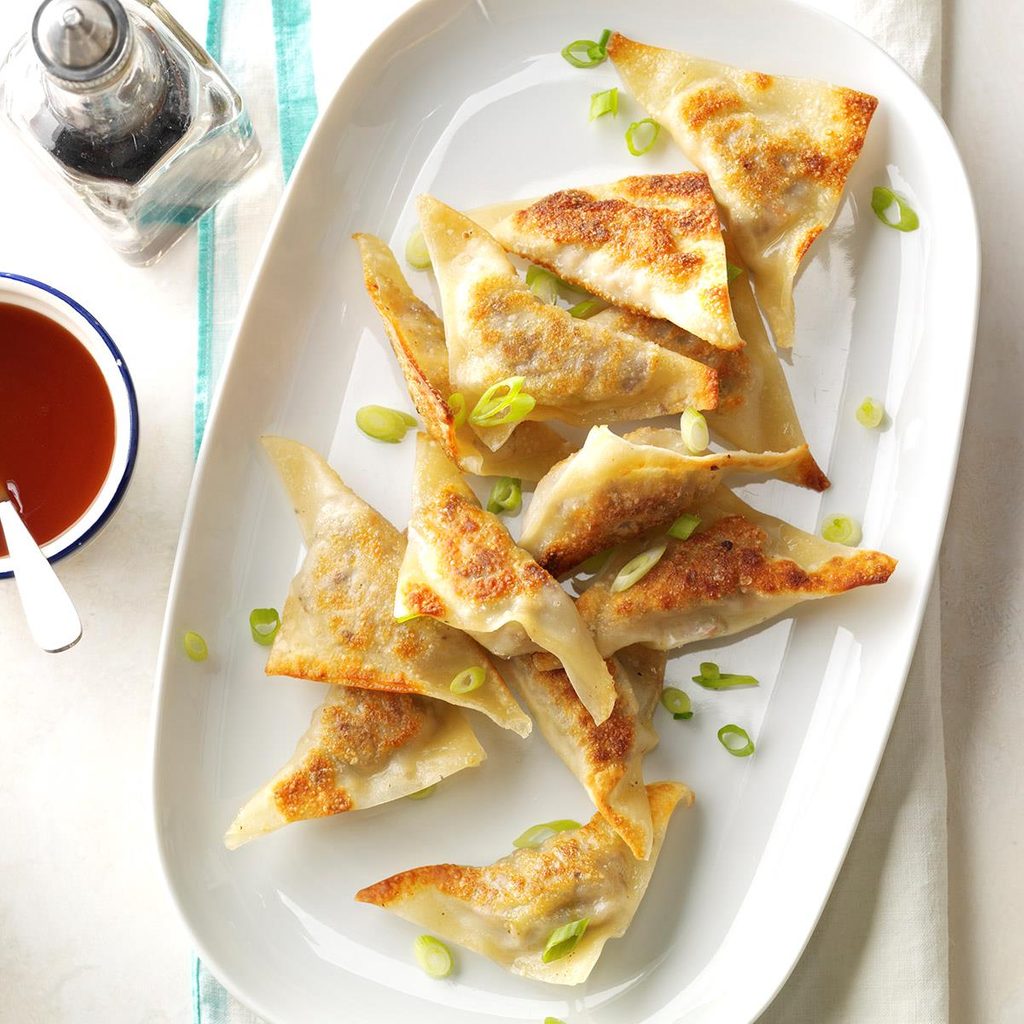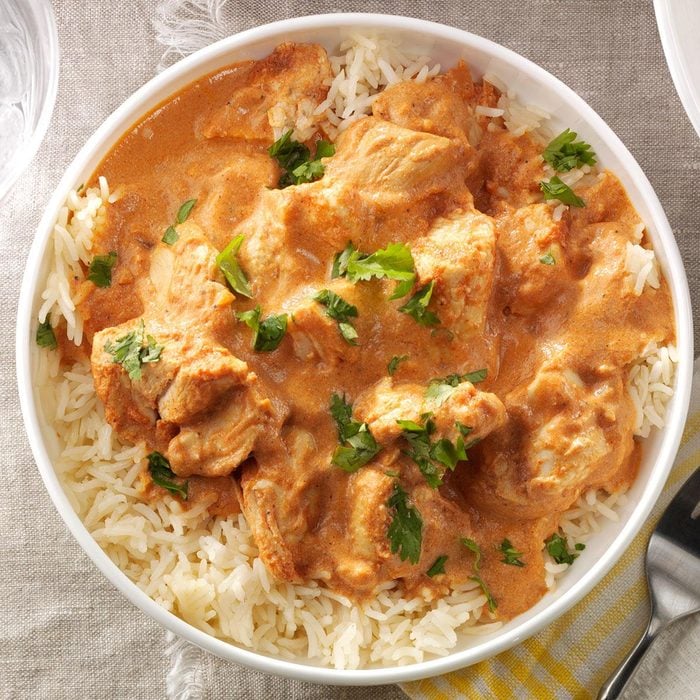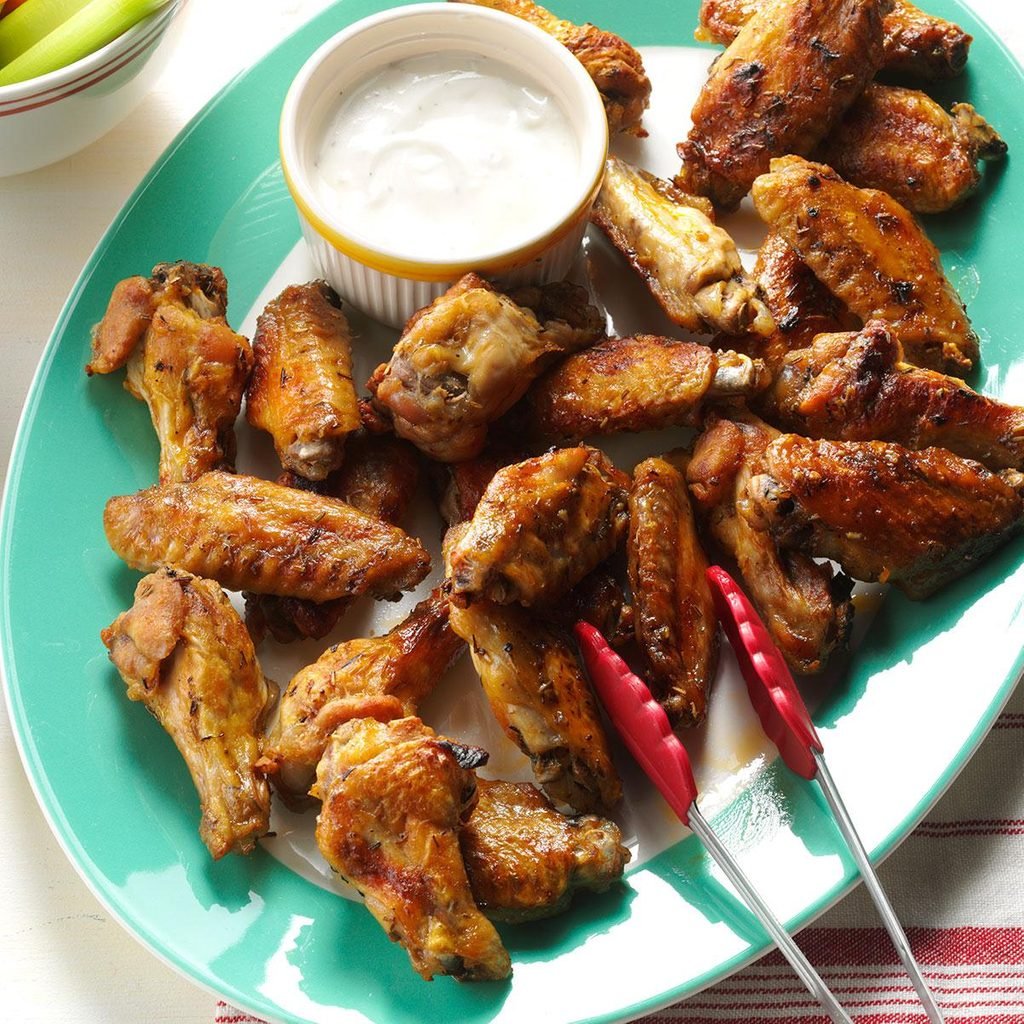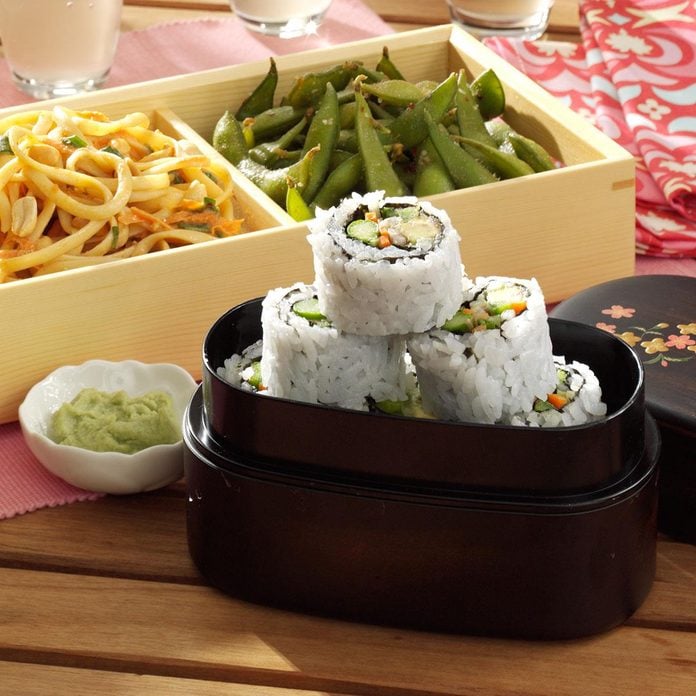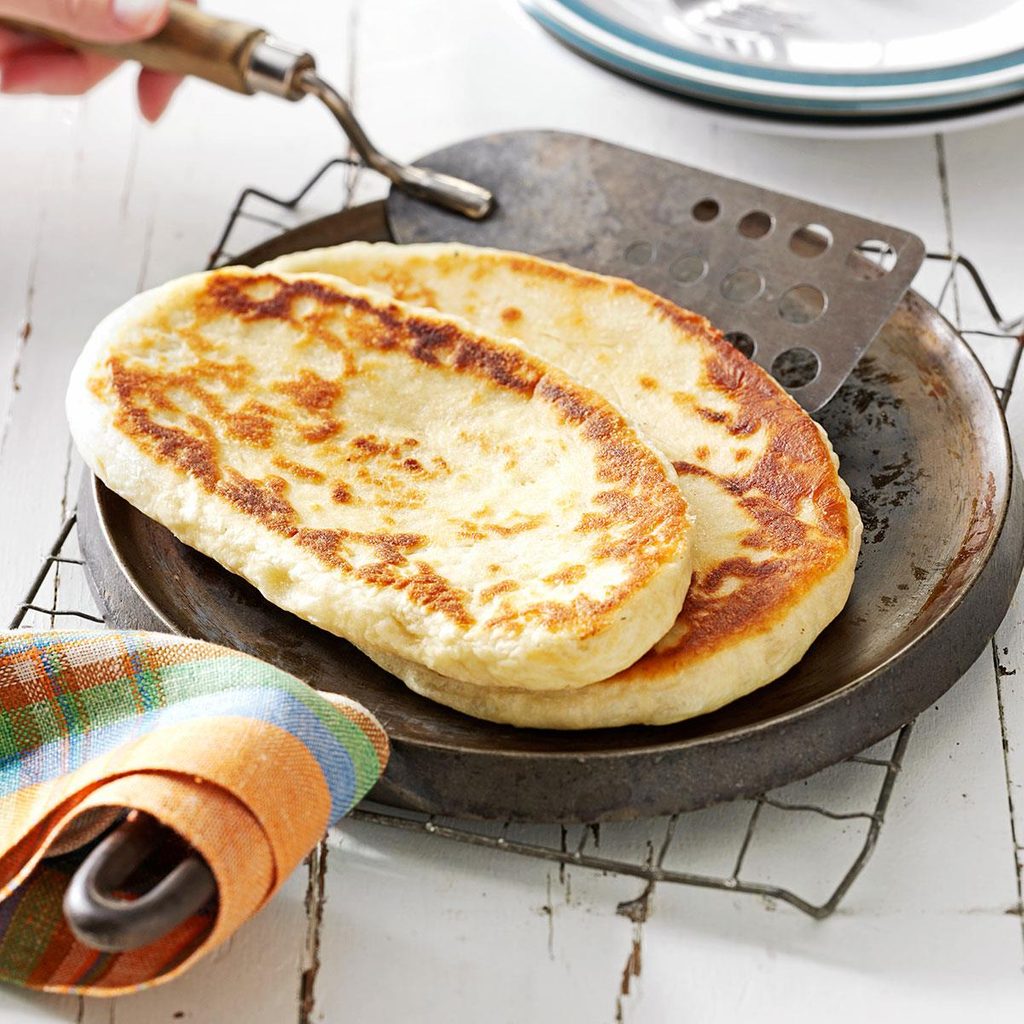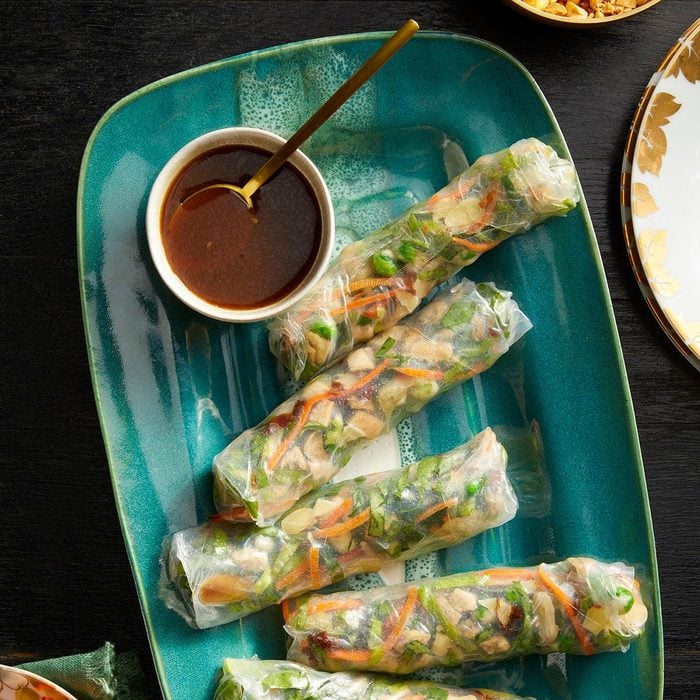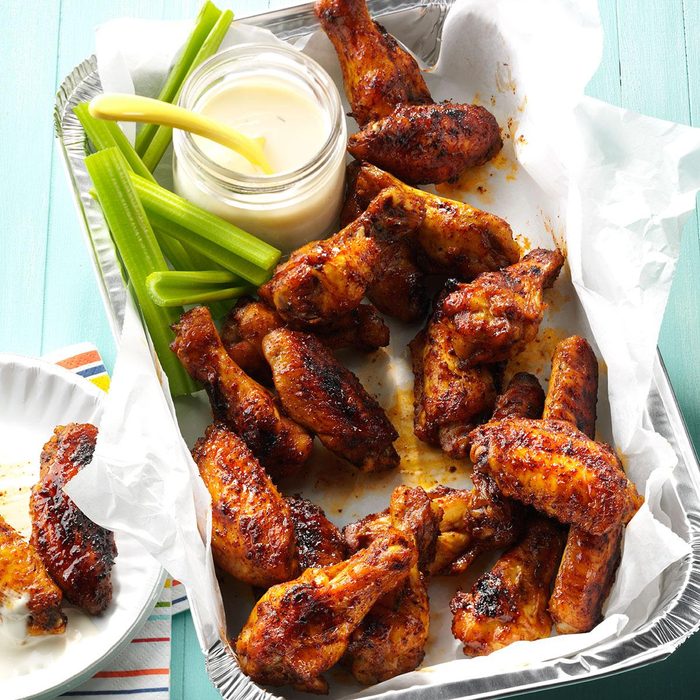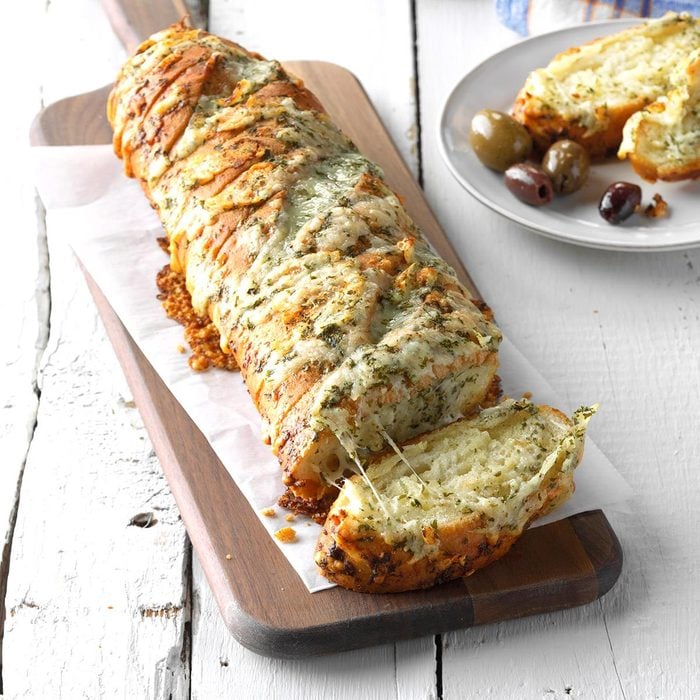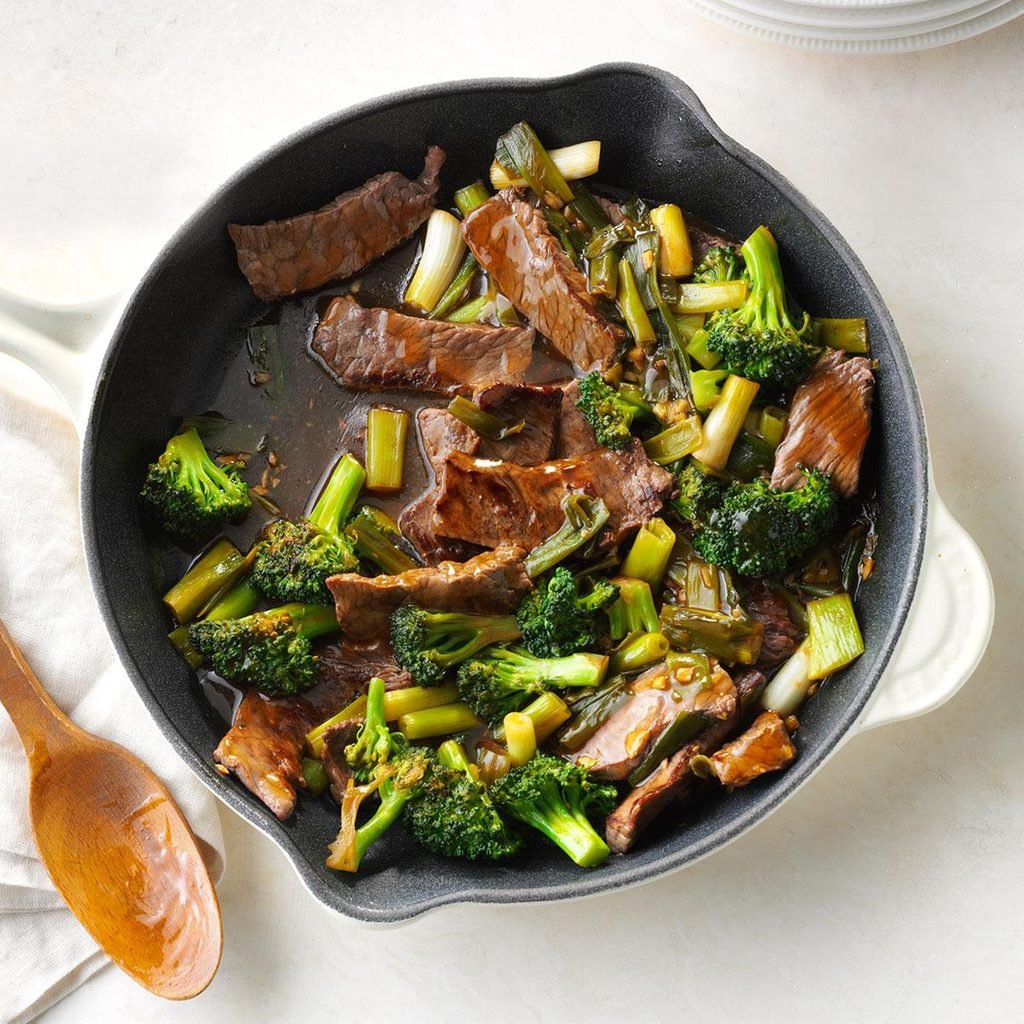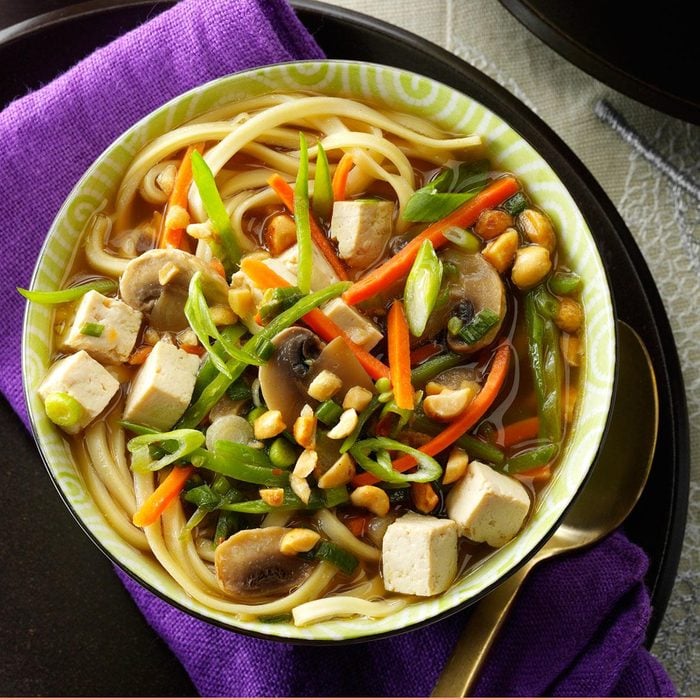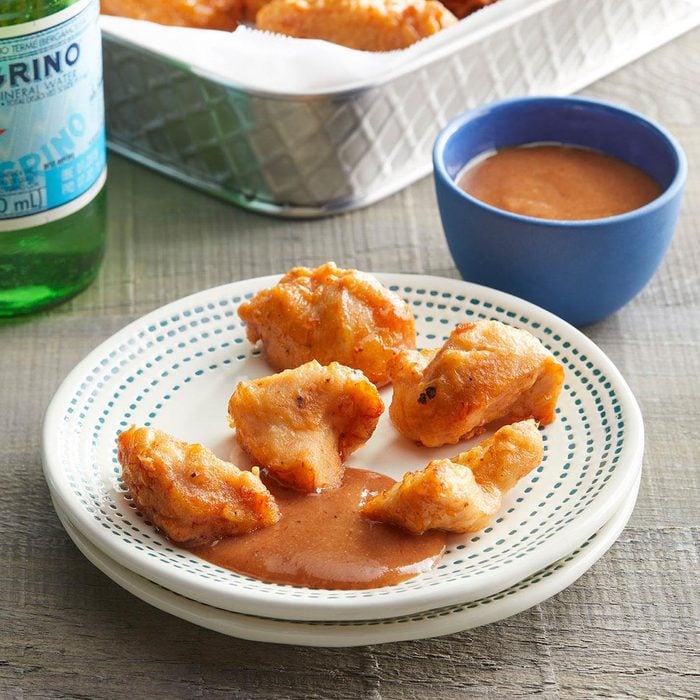Baked Egg Rolls
These egg rolls are low in fat but the crispiness from baking will fool you into thinking they were fried! —Barbara Lierman, Lyons, Nebraska
Go to Recipe
Pepperoni Pan PizzaI've spent years trying to come up with the perfect pizza crust and sauce, and they're paired up in this recipe. I fix this crispy, savory pizza for my family often, and it really satisfies my husband and sons. —Susan Lindahl, Alford, Florida
Check out these
copycat bread recipes from top restaurants.
Asparagus Beef Lo MeinThis springtime beef lo mein recipe is as easy as it gets. Ramen noodles make it extra fun. —Dottie Wanat, Modesto, California
Asian Chicken WingsThese baked Asian chicken wings are tender, juicy and irresistible. They soak up complex flavors from an Asian-inspired marinade made with sweet chili sauce, fish sauce, garlic and Chinese five-spice powder.
Chicken Sausage GyrosSurprise your family after a day at the beach with this fast, filling meal in minutes. Casual and hearty, the whole wheat pitas are packed with veggies—and flavor. —Kerri George, Berne, Indiana
Don't forget to take a look at our collection of the
best copycat recipes of 2022.
Garlic-Chive Baked FriesYes, you
do want fries with that—especially these crispy, golden fries, full of garlic flavor and just a little bit of heat. —Steve Westphal, Wind Lake, Wisconsin
Deep-Dish Sausage PizzaMy grandma made the tastiest snacks for us when we stayed the night at her farm. Her wonderful pizza, hot from the oven, was covered with cheese and had fragrant herbs in the crust. Now this pizza is frequently a meal for my husband, our family and me. —Michele Madden, Washington Court House, Ohio
Orange Beef Lettuce WrapsThis is a lighter version of a restaurant favorite. I also recommend trying these wraps with ground chicken or turkey.—Robin Haas, Cranston, Rhode Island
Baked Crab RangoonsWhen I'm dining out, crab rangoons are one of my go-to dishes. I decided to create a better-for-you version at home. —Emily Higgins, Wingdale, New York
Wisconsin Butter BurgersIt’s no secret that Wisconsinites love their dairy—so much that they sometimes top their burgers with a generous pat of butter.
My recipe is a lot like the butter burgers you’ll find in popular restaurants all over the state. —Becky Carver, North Royalton, Ohio
PoutineThe ultimate in French-Canadian junk food, poutine commonly features warm fries topped with cheese curds and gravy. This side dish is quick to fix with frozen potatoes and packaged gravy but has all the traditional greasy spoon comfort. —Shelisa Terry, Henderson, Nevada
Cinnamon TwistsThese delightful golden twists are perfect for a spring brunch or lunch. The brown sugar and cinnamon give them a delicate spicy flavor. People can rarely eat just one.
—Janet Mooberry, Peoria, Illinois
Chili-Lime Chicken WingsWho would have guessed that mixing maple syrup, chili sauce and lime juice would make chicken wings taste so good? Family and guests alike will scramble to ensure they get more than one of these utterly delicious wings - so be sure to make extras! —Taste of Home Test Kitchen
California RollMaking your own California sushi roll is surprisingly easy. You'll need a bamboo mat, sushi rice and nori sheets to get started, and with a bit of practice, you'll be a pro in no time.
Sesame-Beef Pot StickersI enjoy having these potstickers as a late-night snack. They also work well as a quick appetizer for family parties. —Carolyn Turner, Reno, Nevada
Meatball PizzaMeatballs, tomato sauce, cheese, pizza dough—a recipe for meatball pizza heaven.
Crispy Baked WontonsThese quick, versatile wontons are great for a savory snack or paired with a bowl of soothing soup on a cold day. I usually make a large batch, freeze half on a floured baking sheet, then store in an airtight container. —Brianna Shade, Beaverton, Oregon
Honey-Mustard WingsHomemade baked honey-mustard wings are packed with flavor, thanks to spicy mustard and your favorite honey, and they're easy to make for any gathering.
Vegetarian Pad ThaiThis is a simple pad thai loaded with crisp vegetables and zesty flavor. It’s quick, simple, and fresh-tasting. —Colleen Doucette, Truro, Nova Scotia
Double Nut BaklavaIt may take some time to make this rich, buttery treat, but it's well worth the effort! The blend of coconut, pecans and macadamia nuts is irresistible. —Kari Kelley, Plains, Montana
Herb-Happy Garlic BreadYou'll love the fresh garlic and herbs in this recipe. The mild goat cheese that’s sprinkled on top makes it extra rich and wonderful. —Taste of Home Test Kitchen. If you're looking for more copycat recipes, don't forget to check out our favorite
Domino’s cheesy bread recipe.
Cauliflower & Tofu CurryCauliflower, garbanzo beans and tofu are each subtle on their own, but together they make an awesome base for curry. We have this recipe weekly because one of us is always craving it. —Patrick McGilvray, Cincinnati, Ohio
Cheese FriesI came up with this recipe after my daughter had cheese fries at a restaurant and couldn't stop talking about them. She loves that I can fix them so quickly at home. Plus, the frozen fry packets can be refrigerated and reheated. —Melissa Tatum, Greensboro, North Carolina
Easy Chicken Fried RiceAfter my first child was born, I needed meals that were satisfying and fast. This easy chicken fried rice is now part of our regular dinner rotation. — Alicia Gower, Auburn, New York
Deep-Dish PizzaLearn how to make deep-dish pizza in a cast-iron skillet at home. This recipe makes a thick crust topped with a no-cook sauce, savory toppings and plenty of melty cheese.
Korean WontonsKorean wontons (called mandoo) are not hot and spicy like many of the traditional Korean dishes. Filled with inexpensive vegetables and beef, the fried dumplings are very easy to prepare and so tasty!. —Christy Lee, Horsham, Pennsylvania
Chicken Tikka MasalaEnjoy the rich, aromatic goodness of homemade chicken tikka masala. The flavor is complex and laden with spices, but the dish is easier to make than you might think.
Like ‘Em Hot WingsThese spicy Buffalo-style chicken wings are wonderfully seasoned. They are an easy, crowd-pleasing snack that disappears quickly. —Myra Innes, Auburn, Kansas
Veggie Sushi RollsThese sushi rolls are a great
finger food, side or even main course. They're versatile and can be made with any veggies you like. Kids have fun making them.—Sarah Christenson, San Diego, California
Bread Machine NaanChewy yeast-raised flat bread is a snap to make in a bread machine. Serve naan with your favorite Indian dish to soak up the curry and sauces. —Shannon Ventresca, Middleboro, Massachusetts
Fresh Spring RollsLearn how to make rice paper-wrapped spring rolls that are fresh, crunchy and delicious. It is easier than you think!
Spicy Chicken Wings with Blue Cheese DipThese fall-off-the-bone tender wings have just the right amount of heat, and the cool blue cheese dressing makes the perfect dip. —Kevalyn Henderson, Hayward, Wisconsin
Swiss Cheese BreadThis bread will receive rave reviews, whether you serve it as an appetizer or with a meal. For real convenience, you can make it ahead of time and freeze it! —Karla Boice, Mahtomedi, Minnesota. Have you tried these
healthy copycat recipes?
Saucy Beef with BroccoliWhen I’m looking for a fast entree, I turn to this beef and broccoli stir-fry. It features a tantalizing sauce made with garlic and ginger. —Rosa Evans, Odessa, Missouri
Little Caesar's Pretzel Crust Pizza
In our house, we love pizza and pretzel bread! When Little Caesar's came out with their pretzel crust pizza, we fell in love but also knew it was unrealistic to be buying it all the time. The next best thing was to make it ourselves, and it came out even better than the restaurant's version! This thick-crusted copycat pizza is bound to blow your socks off! Hope you enjoy! —Mary Lou Timpson, Centennial Park, Arizona
Go to Recipe
Asian Tofu Noodle SoupGinger, garlic and sherry jazz up this soup loaded with veggies and noodles. We like to accent ours with peanuts and green onions. —Diana Rios, Lytle, Texas
Grilled Cherry-Glazed Chicken WingsWhen I take these grilled wings to events, there are never any leftovers! Friends and family love them. —Ashley Gable, Atlanta, Georgia
Chick-fil-A Nuggets RecipeI developed this recipe to copycat Chick-fil-A chicken nuggets. I knew I had a winner the first time I made them because the whole family fought over who got the last one! For a dipping sauce, combine barbecue sauce and Dijon mustard, then stir in honey to add some sweetness. —Jeni Pittard, Statham, Georgia
